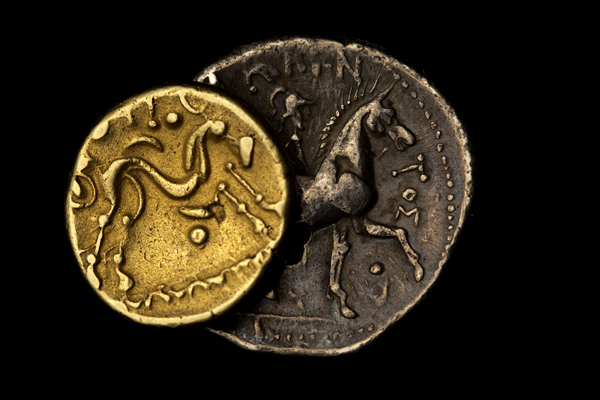- British B1 Chute: 5
- British B2 Hampshire Thunderbolt: 2, 14, 28, 32, 37, 40, 43, 50, 117, 120, 122, and 123
- British Da1 Curdridge: 88
- British Da2 Curdridge
- British Da2 Curdridge Triad: 36, 58, and 74
- British Db1 Cheriton Smiler: 88
- British Db2 Cheriton Cogwheel: 103
- British Db2 Cheriton Annulets
The British B and D coins are attributed to the Belgae, but there are reasons to believe that they were minted by an unknown tribe that is lost to history. There are three reasons for thinking this:
- The design on the staters is an indigenous Westerham design, but the Belgae consisted of tribes originally from northern Gaul, some newly arrived, who had their own distinctive style.
- British B was followed by British Da and then British Db before dropping out of the numismatic record. British D has a much smaller distribution, lower gold content, and lower weight, than British B. They appear to have been minted by a tribe that was losing territory and wealth.
- Chute staters have been found in many large hoards, and as a result is the insular coinage with the highest survival rate. If these hoards were still under the tribe’s control when British D was minted, then they would have been melted down and British D coins would have a higher gold content than they do. Their low gold content suggests that whoever minted them no longer controlled the territory where the British B hoards were buried.
The decline in weight, gold content, and distribution suggests that whoever minted these coins was losing territory to another tribe before ultimately losing it all. It’s possible that these coins were minted to help a last ditch effort to survive as an independent tribe.

